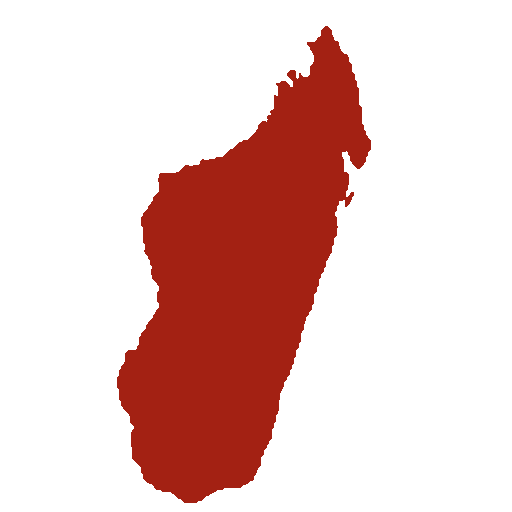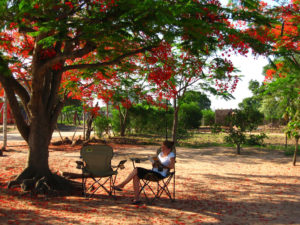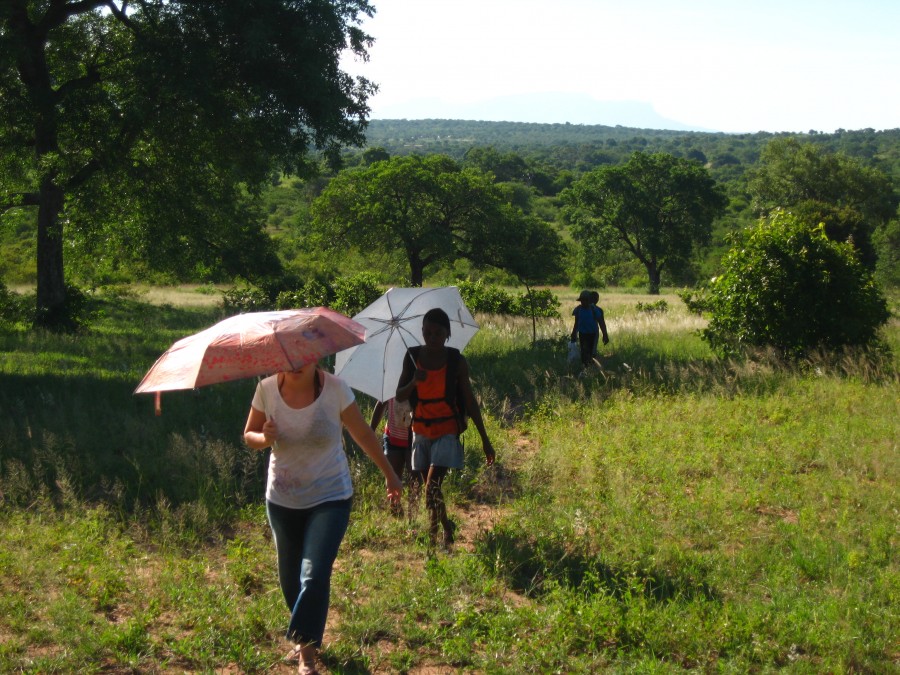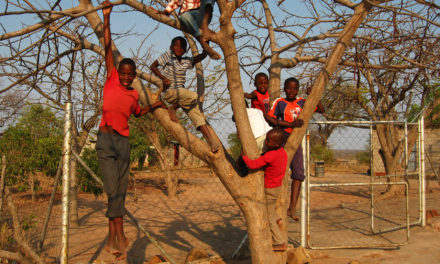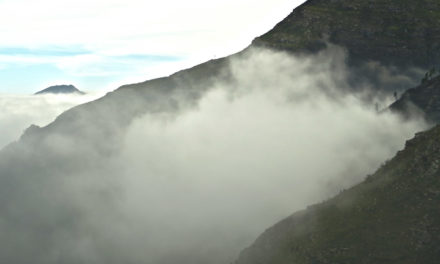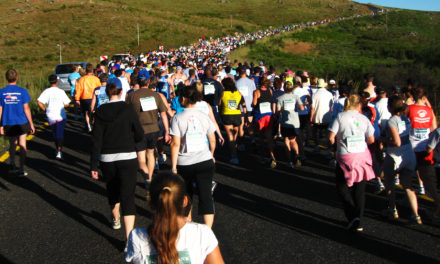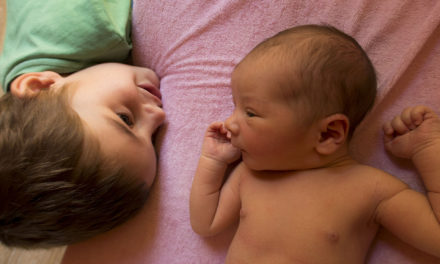We hear that almost 100 times a day. “It’s very hot!” may sound like a boring conversation topic, but when it’s actually this hot every day, there’s really not much else worth saying.
At 24 degrees south of the equator, the tropical climate is really starting to heat up around here. As we hear reports of snow back home in the Northern Hemisphere, we’re trying to survive blistering days of well over 100 degrees Fahrenheit. It’s amazing what a difference another 10 latitudinal degrees from the equator can make. The sun itself just feels hotter.
And when we think about how Christmas is just right around the corner, the time where everyone hopes for snow, the hot days here just seem that much hotter. South Africa’s summer is supposed to be over by March, but according to everyone around here, we don’t have much hope for cooler temperatures until around May or June… just in time for things to start heating up again back there in the United States.
In general, cross-cultural adaptation can be a topsy-turvy situation. So many of the common social rules we’ve grown to understand and apply are turned around and upside down. We have to develop a new understanding and a new way of life (if we want to be successful, that is). But few things have the immediate effect on our consciousness the way that reversing the seasons and experiencing total climate change have had. I imagine that if the climate was milder, then maybe it wouldn’t stand out so much. But there’s nothing mild about the heat here.
When we first arrived in Dumphries at our new home, I thought that for some odd reason the previous owners of our house had decided to cover half the yard with concrete. Odd as I first thought it was, the idea didn’t seem so out of place after we got used to most yards being entirely dust, with grass existing only outside the yard. It’s just part of the culture here. I even told some other Peace Corps Volunteers about the concrete covering our yard and they hypothesized that it acted as a sort of “fire barrier” to prevent the frequent wildfires from spreading to individual homes. That seemed plausible enough.
But it was all wrong. Our yard’s not covered in concrete at all, but in baked sand and clay. No person intentionally did that, it’s just the natural result of the ridiculously hot sun here. I wouldn’t have been so surprised if the ground was simply sandy (like all the roads are). I just never expected that a bit of rain mixed with the soil the day before a typical scorcher would’ve created a sort of natural kiln and baked the surface of the ground nearly as hard as concrete.
When I decided to plant some herbs around our house, I had to use a pickaxe to get through the top layer. Thankfully, the earth was much softer underneath or I think it would’ve been an impossible endeavor.
The oppressive heat around here isn’t merely a physical discomfort – it greatly affects the way people think and live. During the heat of the day, almost no one is moving anywhere, even on the main roads. It’s as if it were a ghost town. And we live in a fairly large village, housing at least a few thousand people.
But if you look closely into the shade of any large tree or even the shade of a small house, you can see everyone there sitting, or more often laying, in a quiet stupor, not stirring at all. Only a few brave children (and recently arrived Peace Corps Volunteers) are foolish enough to leave the safety of the shade during the middle of the day.
You may think that everyone would stay in their houses during the heat, where they could have an electric fan to cool them down, but you’d be wrong. The homes here are almost always built of concrete brick walls with tin or zinc corrugated roofs. This acts as a sort of greenhouse, with all the heat coming inside the house but rarely escaping again.
An indoor thermometer we have has frequently recorded the temperature inside our house at over 100 degrees Fahrenheit, even until 6pm and later. We go to bed sweating uncomfortably, trying to fall asleep and forget the heat. For a few hours in the middle of the night it’s sometimes blissfully cool enough (as long as we have two to three fans going in our bedroom) that we can fall into a deep sleep.
But the heat returns in the early morning and there’s no chance of sleeping in past 7 am; it’s just too hot. Not that anyone here but us ever tries to sleep that late. Everyone else wakes up around 4am or 5am and begins taking care of any household chores during the time of day when the temperature is still bearable enough to do so.
Around 10 AM (and sometimes by 9 AM), people start finding the biggest tree to sit under, or lacking a tree, the whole family squeezes into the couple feet of shade on one side of their house. From about that time until at least 2pm and sometimes as late as 4pm, most people just sit and wait for the heat to relax its overwhelming pressure. There’s almost nothing to do. I’ve never seen a person reading and any physical activity would quickly become unbearable even in the shade.
If Lora and I happen to be out during this time of day, we hear shouts of “ku hisa ngopfu!” and sometimes receive some pretty incredulous looks from people wondering what might be passing through our minds to cause us to be moving around under such extreme conditions.
Well, as I said, Lora and I do sometimes move around during this time of day. Like almost any other American, we get restless when we’re unable to stay inside (and that’s definitely not an option – unless we’ve been wanting to sit in a sauna) and we look for something else useful to do. And until the rains of a month ago, none of the trees in our yard provided any shade at all. So, we’d sometimes roam around, trying to occupy ourselves while we also waited for the heat to dissipate.
Now, we’ve given up on all that. The villagers definitely have the right idea – find shade, wherever you can, and just wait it out. At least we have books to read. But when you’re sweating even in the shade outside, books sometimes lose their enjoyment.
So, we’re slowly adapting to the South African pace of life. We’re learning to wait when there’s simply nothing we can do to alleviate an uncomfortable situation. Waiting isn’t something that comes easy to us Americans, but we really don’t have much of a choice.
But it’s a skill that applies to much more than just the heat here in South Africa. With a culture of waiting on the unrelenting heat comes a culture that’s content to wait on everything. It’s a culture where individuals also don’t mind making people wait on them, with or without reason or notification. And so we’re adjusting in more ways than one, with the difference in climate helping to affect a difference in our understanding.
One aspect of the heat that I might’ve never guessed if I hadn’t experienced it first-hand is the way the oppressive heat affects the mind as well as the body. It seems that it actually slows down a person’s ability to think and process thoughts.
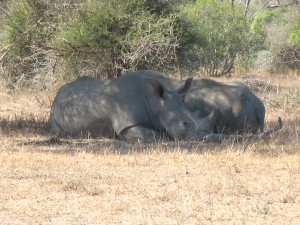
Even the wild animals of South Africa spend the middle-part of every summer day in the shelter of the shade.
But as the day cools down and we regain our mental faculties it’s easier to appreciate them. We may have to give up several hours of each day to the heat, but we’re slowly gaining a quiet patience that I think must be the foundation of the often remarkable resilience of South Africans.The heat doesn’t just take away a person’s desire to be physically active; it even slows their ability to be mentally active. I know because it happens to us, most days from around noon to 2 PM. Thus the frequent difficulty of using our obligatory time in the shade for reading or as brainstorming sessions for project plans. There’s definitely no brainstorming for us; the only weather in our brains is a heat wave – a mentally crippling one.
The history here is a really dirty thing. Though some with an unyielding Western perspective might argue that South Africa is effectively non-functioning, the truth is that it’s actually remarkable how well they’re currently functioning, in spite of their dirty past. The past atrocities committed against the black majority here are incredible to say the least – horrible is a huge understatement.
Every aspect of the government, education, even where people lived, was legislated so as to prevent black South Africans from succeeding and getting ahead. We’re currently living in a former “Homelands” area of South Africa, akin to the “reservations” for Native Americans in the United States.
Though 90% of the population of South Africa is comprised of black South Africans, the former ruling minority chose a scant 10% of the land, specifically selecting the most arid and inhospitable areas, on which to contain and overcrowd the black majority. They had no choice but to try and eke out a living there. Believe it or not, there are many areas of South Africa where the heat is much more frequently balanced by rain or altitude. But the “Homelands Act” forced the majority of South Africans to quietly persist in the dryness and the heat.
Thankfully, something positive might’ve even come of that. The people here are used to sitting in the shade, making do with what they can, and quietly waiting out the uncomfortable times. It’s that quiet patience and enduring resilience that I mentioned. When South Africa finally had the opportunity to right the wrongs of its past, it happened with almost no violence against the former oppressing group. Instead, there was reconciliation. It’s by no means total and complete, it’s certainly a long process and it hasn’t even been 15 years yet, but reconciliation and not revenge is the choice that was made.
Today, we work with adults who were beaten by the police dozens of times, even while they were still children. But I’ve yet to meet any who harbor any desire for vengeance against their former oppressors. They say the system has gone, its time has passed, and now it’s time to work forward again. Just like they know how to wait out the most oppressive hours of the hot days, they waited out their own oppressive political past. And when the oppressive sun relents, it’s time to work again.
So, regardless of how hot it is here or how so many good hours of the day become useless as a result of the heat, there’s something we can learn from it. If we’re able to pick up just some of that quiet patience and enduring resilience that our neighboring South Africans have, it’ll be worth it.
Even in our work, we’re slowly learning what kind of effort is useful here and what kind falls flat. It’s a long and trying process, but we’re learning patience when there’s really nothing else we can do. 😉
